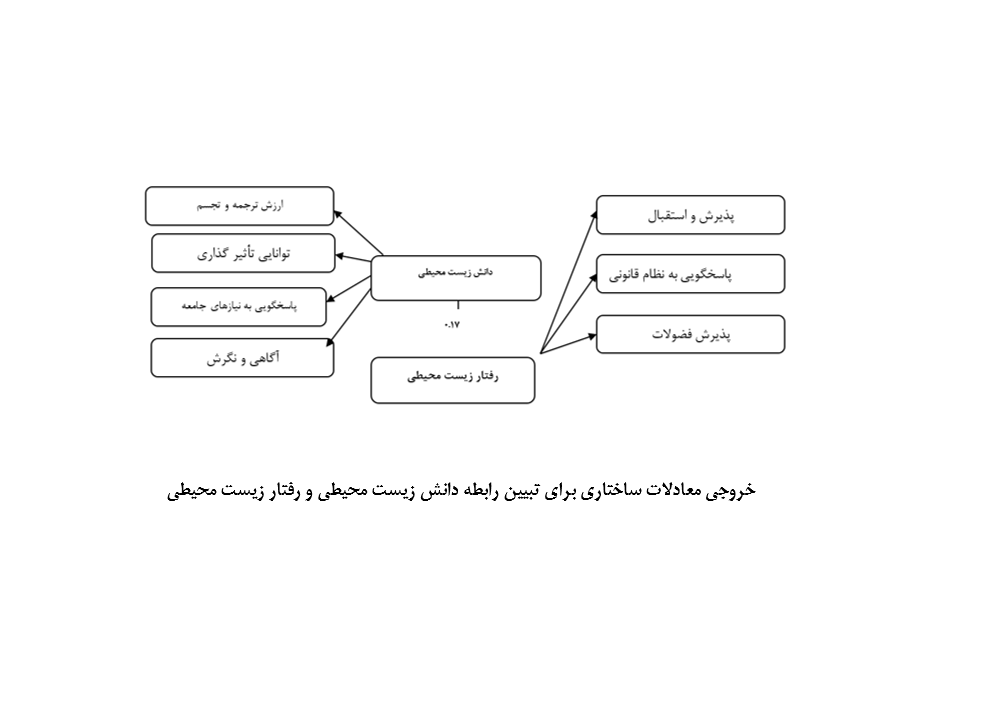The Synergistic Effect of Environmental Education Programs and School Physical Education on Enhancing Students' Environmental Behavior
Keywords:
Educational program integration, physical education , environmental behavior , educational interventionsAbstract
This study was designed and conducted to examine the effect of integrating environmental knowledge programs with school physical education on students' environmental behavior. The research was carried out in two phases: qualitative and quantitative. In the qualitative phase, semi-structured interviews were conducted with 30 physical education teachers in District Two of Tabriz's Department of Education to identify strategies for this integration. In the quantitative phase, a quasi-experimental study was conducted with two student classes, where one class was assigned as the experimental group and the other as the control group. Environmental interventions were applied to the experimental group over an academic term (four months). These interventions included weekly sports programs with various exercises such as running in nature and walking in the park, conducted outdoors using environmentally friendly equipment. Ethical considerations, including informed consent from students and teachers as well as the protection of participants' privacy, were observed, and the necessary coordination with Tabriz's Department of Education was ensured. Data were collected using questionnaires that included 13 items on environmental behavior and 17 items on environmental knowledge. These questionnaires were adapted from Salehi’s (2011) study, and their reliability was confirmed with a Cronbach’s alpha coefficient of over 0.7. Data analysis was conducted using SPSS (version 19) and AMOS (version 23). Structural equation modeling was employed to evaluate the research hypotheses. The reliability of the questionnaires was assessed using Cronbach’s alpha, and the results indicated that in the pre-test phase, environmental knowledge had a coefficient of 0.726, while environmental behavior had a coefficient of 0.756, both indicating acceptable reliability. The results of data analysis after the intervention showed that the environmental knowledge of the experimental group significantly increased. Additionally, a significant relationship between environmental knowledge and behavior was observed. Structural equation modeling demonstrated a positive effect of environmental knowledge on environmental attitudes, with a coefficient of 0.17, and the model fit indices reported a relatively favorable fit. The overall conclusion of the study indicated that integrating environmental education with physical education could serve as an effective strategy in school education. This approach helps cultivate a generation that is more informed and committed to environmental protection. Finally, it is recommended that educational policymakers and physical education instructors consider this approach in their curricula to familiarize students with environmental concepts more effectively through experiential and practical activities, fostering positive attitudes in this regard.
Downloads
References
Kopnina H. Education for sustainable development (ESD): The turn away from 'environment' in environmental education? Environmental and sustainability education policy: Routledge; 2018. p. 135-53.
Turrini T, Dörler D, Richter A, Heigl F, Bonn A. The threefold potential of environmental citizen science-Generating knowledge, creating learning opportunities and enabling civic participation. Biological Conservation. 2018;225:176-86. doi: 10.1016/j.biocon.2018.03.024.
Merritt EG, Stern MJ, Powell RB, Frensley BT. A systematic literature review to identify evidence-based principles to improve online environmental education. Environmental Education Research. 2022;28(5):674-94. doi: 10.1080/13504622.2022.2032610.
Mondejar ME, Avtar R, Diaz HLB, Dubey RK, Esteban J, Gómez-Morales A, et al. Digitalization to achieve sustainable development goals: Steps towards a Smart Green Planet. Science of The Total Environment. 2021;794:148539. doi: 10.1016/j.scitotenv.2021.148539.
Liu P, Teng M, Han C. How does environmental knowledge translate into pro-environmental behaviors?: The mediating role of environmental attitudes and behavioral intentions. Science of the Total Environment. 2020;728:138126. doi: 10.1016/j.scitotenv.2020.138126.
Ural E, Dadlı G. The effect of problem-based learning on 7th-grade students' environmental knowledge, attitudes, and reflective thinking skills in environmental education. Journal of Education in Science Environment and Health. 2020;6(3):177-92. doi: 10.21891/jeseh.705145.
Parsaju A, Javadi Pour M, Zareian H. Outcome of Social Participation in Iran Sport for All. Strategic Studies on Youth and Sports. 2021;20(52):59-80.
Altman K, Yelton B, Porter DE, Kelsey RH, Friedman DB. The Role of Understanding, Trust, and Access in Public Engagement with Environmental Activities and Decision Making: A Qualitative Study with Water Quality Practitioners. Environmental Management. 2023;71:1162-75. doi: 10.1007/s00267-023-01803-2.
Shirsavar Rezghi SH, Prioritizing N. Effective factors in training environmental concepts based on teaching models in higher education of Iran. International Journal of Environmental Science and Technology. 2023;20:5945-56. doi: 10.1007/s13762-023-04859-z.
Shuai Y, Liu X, Wang SS, Kueh YC, Kuan G. Designing Physical Education Courses Based on Musical Environment: Using Spinning as an Example. International Journal of Environmental Research and Public Health. 2023. doi: 10.3390/ijerph20010208.
Lim W, Lau BT, Islam FMA. Cyberbullying Awareness Intervention in Digital and Non-digital Environment for Youth: Current Knowledge. Education and Information Technologies. 2023;28:6869-925. doi: 10.1007/s10639-022-11472-z.
Nooralivand G, Gholami M, Izadi B, editors. Examining the Role of Physical Education Course Content Production in the SHAD System During the COVID-19 Period on Students' Sports Consumption. First International Conference and Sixth National Conference of the Iranian Scientific Association of Sports Management; 2020; Tehran.
Izadi S, Abedini Baltarak M, Mansouri S. Content Analysis of Physical Education in Elementary School Textbooks. Journal of Sports Management and Motor Behavior Research. 2011;7(13):27-40.
Shariati Feyz Abadi M, Zare R. Sports and Sustainable Environmental Security. Research in Educational Sports. 2022;10(27):81-102.

Downloads
Published
Submitted
Revised
Accepted
Issue
Section
License
Copyright (c) 2025 Aqeel Abbood Mohsin (Corresponding author); Mohammad Taghi Aghdasi, Seyed Hojjat Zamani Sani (Author)

This work is licensed under a Creative Commons Attribution-NonCommercial 4.0 International License.










